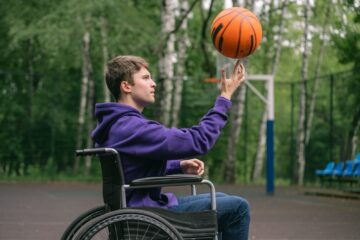A home is a place where you can live comfortably and have the accessibility to do your daily tasks with ease. When it comes to supported independent living for those with disabilities, designing homes that prioritise accessibility, safety, and comfort becomes important. If you’re designing your first home and want to prioritise accessibility, EaseCare provides valuable tips and considerations to transform your space and maximise accessibility for personal care tasks, such as cooking and cleaning.
Designing for Accessibility
Entryways and Exits:
You can install ramps or elevators for easy access for wheelchair users. Ensure doorways are wide enough to accommodate mobility aids. Using non-slip flooring materials also helps to prevent slips and falls.
Kitchen Design:
You can also design lower countertops or adjustable height surfaces if you use wheelchairs. Install pull-out or adjustable shelves for easy reach. Including lever-style faucets and easy-to-grip handles make them better for usability. If you need help adjusting, EaseCare provides support services with cooking, we can help you make your favourite meals with ease and also help clean up after.
Bathroom Design:
Install grab bars near toilets, showers, and bathtubs to assist with transfers and stability. If possible, you can also design to include roll-in showers or bathtubs with transfer benches for wheelchair users. Use slip-resistant flooring and ensure adequate lighting. EaseCare also provides support services with building your routine and personal hygiene practices.
Lighting and Colour Contrast:
Use appropriate lighting throughout the home, especially in high-traffic areas and task-oriented spaces. Incorporate colour contrast between walls, furniture, and floor surfaces to aid with visual impairments in navigation.
Smart Home Technology:

Use voice-activated systems or home automation where you can. This will help to control lighting, temperature, and security features. Integrate assistive technologies, such as voice-controlled appliances or devices, to promote independence in daily tasks.
Importance of Accessible and Inclusive Spaces
Promoting Independence:
Accessible and inclusive living spaces lets individuals with disabilities to navigate their homes independently, boosting their self-esteem and confidence. At EaseCare, we can help provide you with custom care as per your needs. Whether you need it 24/7 or just till you can develop the skills to live on your own and in your own place.
Enhancing Safety:
Well-designed spaces minimise physical hazards, reduce the risk of accidents, and ensure emergency evacuation is feasible for all residents.
Improving Social Participation:

Inclusive spaces encourage social participation and creates a sense of belonging, lowering barriers that might make it difficult for individuals with disabilities from engaging in activities with their peers.
Creating accessible and inclusive living spaces is not only a matter of compliance but a fundamental step towards promoting independence, dignity, and inclusion for individuals with disabilities in supported independent living settings. By implementing the suggested tips and considerations, you can transform your space into a haven that maximises accessibility, safety, and comfort. Let’s strive to design homes that celebrate diversity and empower everyone to thrive in their own space, fostering a more inclusive and compassionate society. If you would like to know more about EaseCare’s supported independent living services, contact us today!


